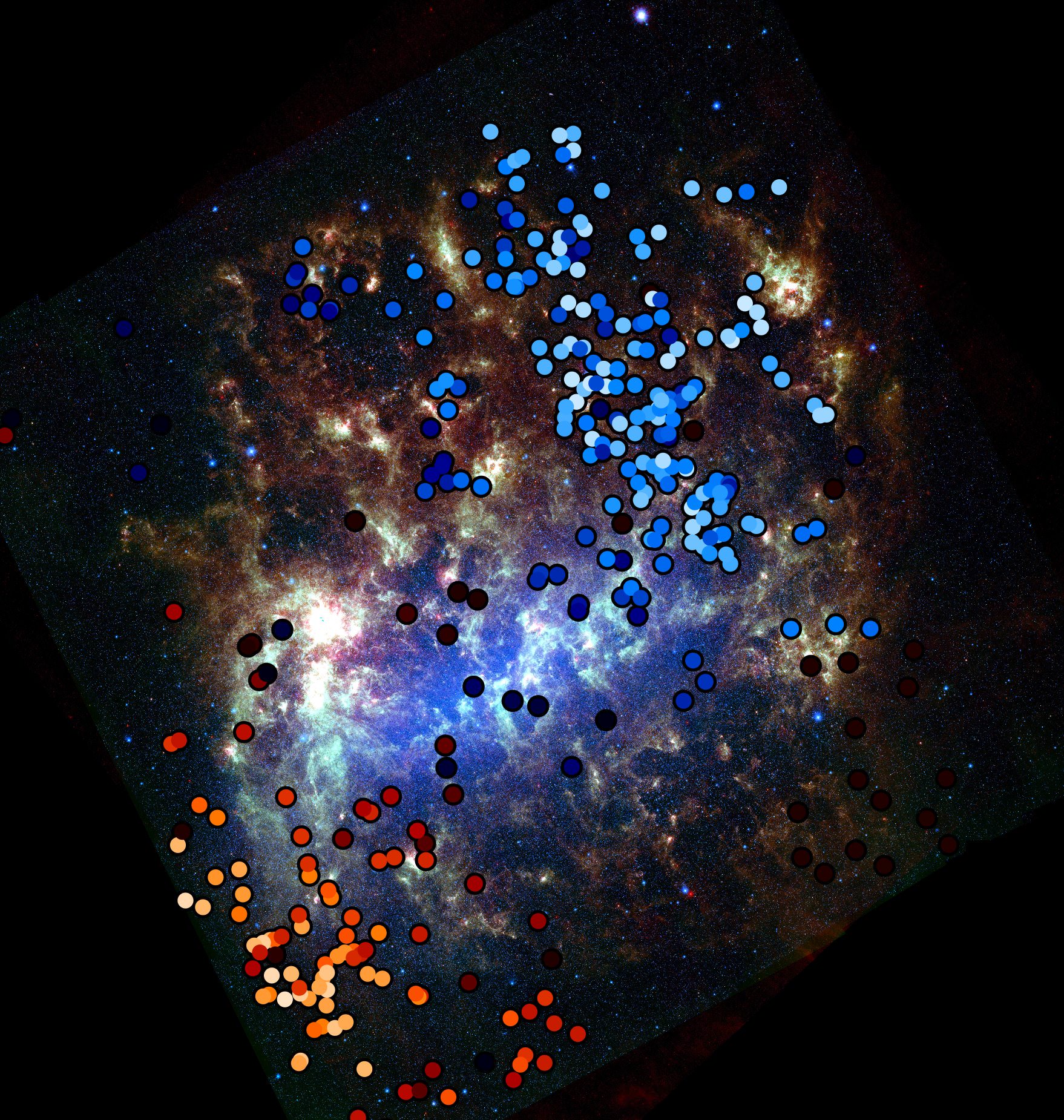[/caption]
Using the Spitzer Space Telescope, a team of astronomers from the National Optical Astronomy Observatory (NOAO) have made a unique discovery. Our neighbor – the Large Magellanic Cloud – has been caught pilfering stars from the Small Magellanic Cloud! What caused this cosmic crime and what do we know about it? Read on…
Through the use of spectra, 5900 giant and supergiant stars in the Large Magellanic Cloud have been identified as once belonging to the nearby Small Magellanic Cloud. NOAO astronomers Knut Olsen and Bob Blum, and their collaborators Dennis Zaritsky (University of Arizona), and Martha Boyer and Karl Gordon (Space Telescope Science Institute) were hot on the trail as they ascertained a counter rotation in a small percentage of the stellar population. Although they could only take information from “line of sight” stars, this 5% was enough to give them a clue they weren’t formed where they are now located. Even their chemical signature isn’t right!
“Further examination of these counter-rotating stars revealed another anomaly. The chemical composition of these stars is different. They have fewer heavy elements such as iron and calcium than typical stars in the Large Magellanic Cloud.” say the team. “However, their composition closely matches that of stars in another nearby galaxy, the Small Magellanic Cloud, whose stars are also depleted in these “metals”.
Just like fingerprints, these two signatures – motion and composition – are a dead giveaway that these certain stars have been lifted by gravitational interaction. To further refine the evidence the group used the multi-object spectrometer on the Cerro Tololo Inter-American Observatory 4-meter Blanco Telescope in Chile to observe 4600 stars, and their spectra, simultaneously. When compared to 1300 other stars, a pattern begin to emerge. According to Olsen “It is not always easy to tell whether the stars in a galaxy formed in the galaxy or formed somewhere else and then were captured. Since the LMC is so close to us, we were able to observe a large number of individual stars. And to our surprise, the LMC contained a significant number of stars that must have formed elsewhere.”
Continuing their investigations with the Spitzer Space Telescope, the team is also involved with stellar evolution studies in the LMC. NOAO Deputy Director Bob Blum indicated the importance of this approach: “Using observations with the Spitzer Space Telescope, we were able to get a complete census of the stellar populations in the LMC. With the ground-based observations we could determine the properties and motions of a large sample of stars throughout that galaxy. By combining both, we were able to tell that some of the stars must have come from the neighboring SMC. This led us to a deeper understanding of how galaxies can and do interact, and change over time.”
These studies may help us to further understand high rates of star formation in areas like 30 Doradus… When we’re not just stealin’ a look.
Original News Source: NOAO News.


I did a 365 Days of Astronomy podcast on this. You can listen to it at http://365daysofastronomy.org/2011/07/17/july-17th-the-galactic-star-thief/
Oh, that bully! I’m sure it takes some lunch money (dust clouds to make stars of) too.
And here we are, the more grown up in the neighborhood, relegated to watch the kids running around. Pbbrrrt on that!
Shocking! Somebody call the Milky Way!
It is easy knowledge, the distance from Earth of the 2 clouds, but I had no idea how far apart they were. I knew there was a Magellanic Bridge but Wiki was very brief about it.
I found the answer ((c.46,000LY between near edges)) and a fine 43 PPT screens presentation at:
http://www.docstoc.com/docs/74743548/HI-Shells-of-the-Magellanic-Bridge